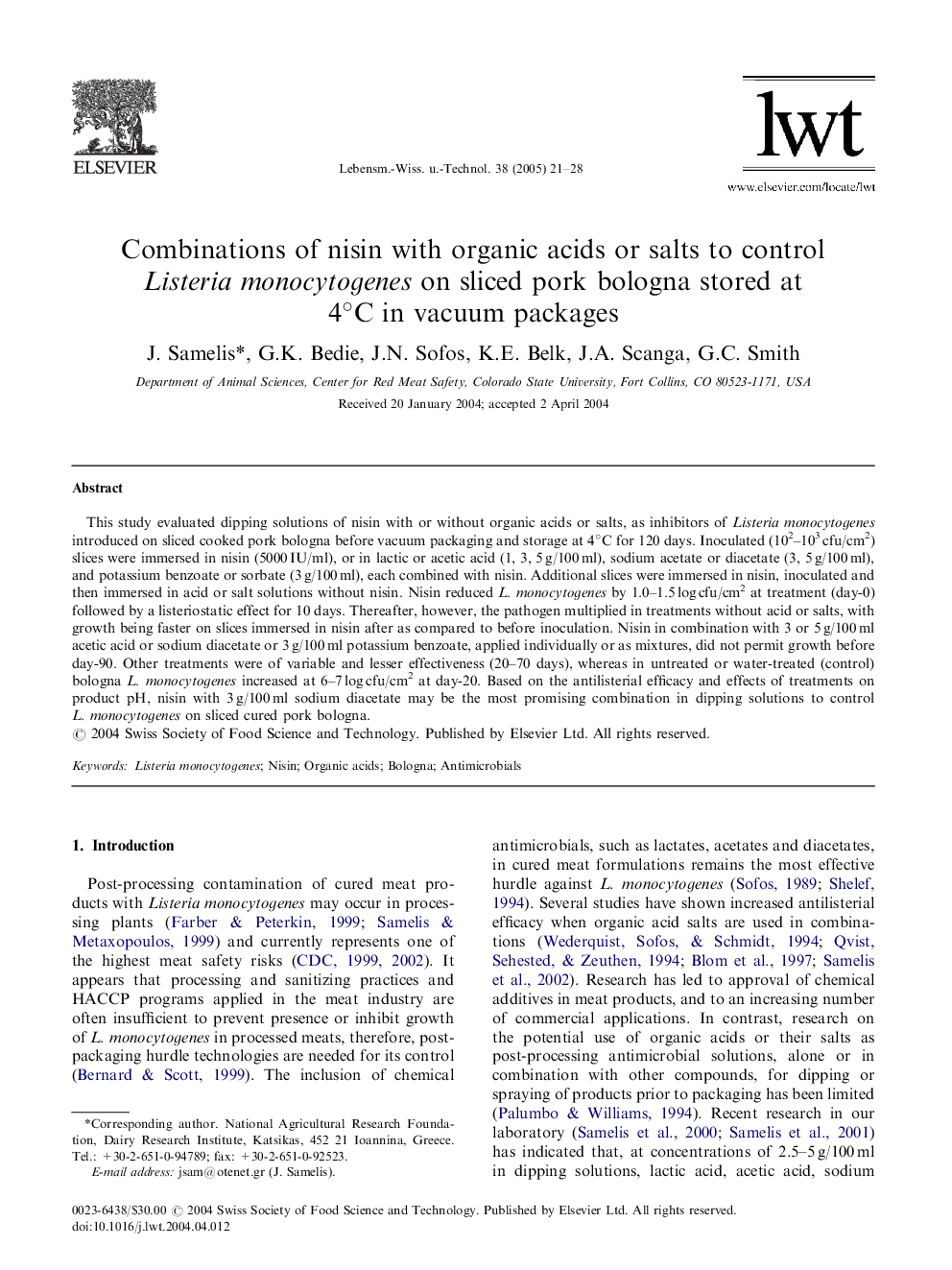| Article ID | Journal | Published Year | Pages | File Type |
|---|---|---|---|---|
| 9488239 | LWT - Food Science and Technology | 2005 | 8 Pages |
Abstract
This study evaluated dipping solutions of nisin with or without organic acids or salts, as inhibitors of Listeria monocytogenes introduced on sliced cooked pork bologna before vacuum packaging and storage at 4°C for 120 days. Inoculated (102-103 cfu/cm2) slices were immersed in nisin (5000 IU/ml), or in lactic or acetic acid (1, 3, 5 g/100 ml), sodium acetate or diacetate (3, 5 g/100 ml), and potassium benzoate or sorbate (3 g/100 ml), each combined with nisin. Additional slices were immersed in nisin, inoculated and then immersed in acid or salt solutions without nisin. Nisin reduced L. monocytogenes by 1.0-1.5 log cfu/cm2 at treatment (day-0) followed by a listeriostatic effect for 10 days. Thereafter, however, the pathogen multiplied in treatments without acid or salts, with growth being faster on slices immersed in nisin after as compared to before inoculation. Nisin in combination with 3 or 5 g/100 ml acetic acid or sodium diacetate or 3 g/100 ml potassium benzoate, applied individually or as mixtures, did not permit growth before day-90. Other treatments were of variable and lesser effectiveness (20-70 days), whereas in untreated or water-treated (control) bologna L. monocytogenes increased at 6-7 log cfu/cm2 at day-20. Based on the antilisterial efficacy and effects of treatments on product pH, nisin with 3 g/100 ml sodium diacetate may be the most promising combination in dipping solutions to control L. monocytogenes on sliced cured pork bologna.
Related Topics
Life Sciences
Agricultural and Biological Sciences
Food Science
Authors
J. Samelis, G.K. Bedie, J.N. Sofos, K.E. Belk, J.A. Scanga, G.C. Smith,
